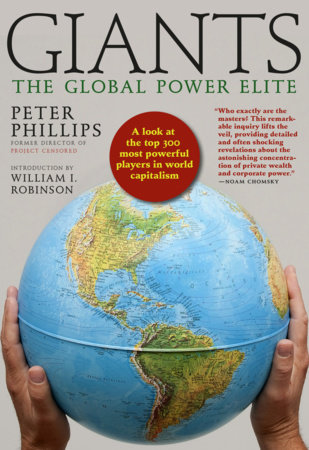More from Food
#bkdk sfw, drabble
-🍛
"Suprise, Kacchan!"
Izuku happily wiggles, hopping from one foot to the other like an excitable toddler, despite the fact that he's 6 foot something and a venerable powerhouse of a pro hero.
In his hand is a plate of… something… messy from each edge.
There's a message written on top in some sort of sauce, but the sauce had gotten absorbed in the rice. The mishmashed mush of vegetables (?) kind of looked like something you would pull out of a shower drain.
But the meat looks good? Browned chicken, maybe a little overspiced.
"The hell's this?"
"I made you dinner!" Izuku ushers Katsuki towards the dining table, hardly letting him take off his jacket first.
As soon as Katsuki sits, a napkin gets shoved in his lap as if they're at a fancy restaurant. Izuku becomes a whirlwind, flitting this way
and that in their home until there are a number of candles lit.
It would make the ambiance more romantic if it wasn't still daylight outside. It was closer to lunchtime than dinner, but Katsuki would let him have this.
He, instead, stares down at [the meal] and carefully schools his features. He isn't sure if he looks deadpan or intrigued like he means to, because as soon as he looks close, the veggies /jump/ on the plate, bubbling like they're still boiling.
-🍛
"Suprise, Kacchan!"
Izuku happily wiggles, hopping from one foot to the other like an excitable toddler, despite the fact that he's 6 foot something and a venerable powerhouse of a pro hero.
In his hand is a plate of… something… messy from each edge.
uwu Katsuki forcing himself to eat Deku's shitty meals \U0001f91f\U0001f62b and not telling the other that it sucks
— \U0001f4a5\U0001f966CHUBBY DEKU CONNOISEUR\U0001f966\U0001f4a5 (@WeebTrash04) January 9, 2021
There's a message written on top in some sort of sauce, but the sauce had gotten absorbed in the rice. The mishmashed mush of vegetables (?) kind of looked like something you would pull out of a shower drain.
But the meat looks good? Browned chicken, maybe a little overspiced.
"The hell's this?"
"I made you dinner!" Izuku ushers Katsuki towards the dining table, hardly letting him take off his jacket first.
As soon as Katsuki sits, a napkin gets shoved in his lap as if they're at a fancy restaurant. Izuku becomes a whirlwind, flitting this way
and that in their home until there are a number of candles lit.
It would make the ambiance more romantic if it wasn't still daylight outside. It was closer to lunchtime than dinner, but Katsuki would let him have this.
He, instead, stares down at [the meal] and carefully schools his features. He isn't sure if he looks deadpan or intrigued like he means to, because as soon as he looks close, the veggies /jump/ on the plate, bubbling like they're still boiling.
You May Also Like
**Thread on Bravery of Sikhs**
(I am forced to do this due to continuous hounding of Sikh Extremists since yesterday)
Rani Jindan Kaur, wife of Maharaja Ranjit Singh had illegitimate relations with Lal Singh (PM of Ranjit Singh). Along with Lal Singh, she attacked Jammu, burnt - https://t.co/EfjAq59AyI

Hindu villages of Jasrota, caused rebellion in Jammu, attacked Kishtwar.
Ancestors of Raja Ranjit Singh, The Sansi Tribe used to give daughters as concubines to Jahangir.

The Ludhiana Political Agency (Later NW Fronties Prov) was formed by less than 4000 British soldiers who advanced from Delhi and reached Ludhiana, receiving submissions of all sikh chiefs along the way. The submission of the troops of Raja of Lahore (Ranjit Singh) at Ambala.
Dabistan a contemporary book on Sikh History tells us that Guru Hargobind broke Naina devi Idol Same source describes Guru Hargobind serving a eunuch
YarKhan. (ref was proudly shared by a sikh on twitter)
Gobind Singh followed Bahadur Shah to Deccan to fight for him.

In Zafarnama, Guru Gobind Singh states that the reason he was in conflict with the Hill Rajas was that while they were worshiping idols, while he was an idol-breaker.
And idiot Hindus place him along Maharana, Prithviraj and Shivaji as saviours of Dharma.

(I am forced to do this due to continuous hounding of Sikh Extremists since yesterday)
Rani Jindan Kaur, wife of Maharaja Ranjit Singh had illegitimate relations with Lal Singh (PM of Ranjit Singh). Along with Lal Singh, she attacked Jammu, burnt - https://t.co/EfjAq59AyI

Tomorrow again same thing happens bcoz fudus like you are creating a narrative oh Khalistan. when farmers are asking MSP. (RSS ki tatti khane wale Kerni sena ke kutte).
— Ancient Economist (@_stock_tips) December 5, 2020
U kill sikhs in 1984 just politics. To BC low IQ fudu Saale entire history was politics.
Hindu villages of Jasrota, caused rebellion in Jammu, attacked Kishtwar.
Ancestors of Raja Ranjit Singh, The Sansi Tribe used to give daughters as concubines to Jahangir.

The Ludhiana Political Agency (Later NW Fronties Prov) was formed by less than 4000 British soldiers who advanced from Delhi and reached Ludhiana, receiving submissions of all sikh chiefs along the way. The submission of the troops of Raja of Lahore (Ranjit Singh) at Ambala.
Dabistan a contemporary book on Sikh History tells us that Guru Hargobind broke Naina devi Idol Same source describes Guru Hargobind serving a eunuch
YarKhan. (ref was proudly shared by a sikh on twitter)
Gobind Singh followed Bahadur Shah to Deccan to fight for him.

In Zafarnama, Guru Gobind Singh states that the reason he was in conflict with the Hill Rajas was that while they were worshiping idols, while he was an idol-breaker.
And idiot Hindus place him along Maharana, Prithviraj and Shivaji as saviours of Dharma.






















